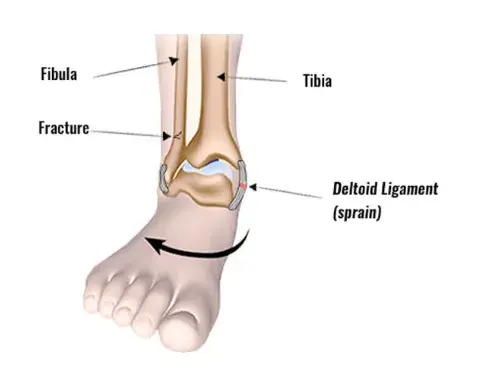Common Injuries Podiatrists see in Rugby League
- My Family Podiatry
- Apr 4
- 3 min read

Rugby League is a fast, fun and dynamic contact sport. Whether it is explosive acceleration, quick directional changes, or heavy tackles, players are at a higher risk of injury compared to some other sports.
Here are two of the most common Rugby League injuries we treat in clinic.
Ankle Sprains
Ankle sprains are by far the most common lower limb injury in rugby league. They can occur when a player is trying to change direction suddenly or land awkwardly in a tackle. Ankle sprains can typically be classified within three main regions
Lateral ankle sprain
injury to the outer ankle region and ligaments such as the ATFL, CFL and PTFL
High ankle sprains/ syndesmosis
injury to the higher outer ankle region such as the AITFL and PITFL:

Medial ankle sprain
injury to the inner ankle region and ligaments such as the deltoid ligament:

When the ligaments are injured, they are typically graded on as a 1, 2 or 3 point scale, based on severity.

Less common but not to be missed injuries associated with ankle sprains
Osteochondral/ OCD/ talar dome lesions. This is like a pothole and/or deep bruising in the cartilage of the ankle joint. This area of the ankle does not heal as well as other parts due to reduced blood supply so early diagnosis and management is key. People with osteochondral lesions often complain of deep aching pain in the ankle joint, even after the swelling and ligament has healed from the initial sprain. MRI and or CT scan are used to identify an osteochondral lesion after careful clinical examination and consideration of your reported symptoms and ankle function.

Fractures/ breaks in the bone. More severe sprains can involve fracture of particular foot and ankle bones such as the fibula, tibia, talus and fifth metatarsals. Once again, early identification of these injuries is key. Most ankle sprains do not need imaging studies such as x-ray, but in some cases we will refer for imaging if you are sore over key areas of particular bones.

Accurate diagnosis of an ankle sprain is the most important first step. Accurate diagnosis provides a clear timeframe on return to sport.
Treatment revolves around restoring ankle range of motion, ankle strength and the body's balance and proprioception both static and dynamically.
Depending on the injury, taping and or/ orthotics can be useful in providing extra stability to prevent further sprains.
Severs (Calcaneal Apophysitis)
This condition refers to pain in the heels at the site of the growth plate. Pain can be felt both underneath the heel and at the back where the achilles inserts.

Severs is more common in boys than girls and occurs between the ages of 10-13 in most cases. The pain is often most sore after periods of rest or sitting for long periods, and warms up with activity.
Increased compressive impact forces from the ground with playing sport, combined with increased tightness and tensile forces through the calf muscle and achilles, combined with periods of growth spurt are all thought to all contribute to pain in the area.
An individual podiatry assessment is always best to provide accurate diagnosis and a tailored treatment plan.
Treatment may consist of:
Footwear advice and recommendations. Typically shoes with increased heel cushioning and a 10mm + heel to toe drop are recommended. Asics football boots are a great option in this care
Home exercise plan. This can entail specific stretches, strength exercises or foam rolling based. These exercises can vary based off calf muscles have the most tension and whether the heel pain is more plantar (underneath) or posterior (at the back)
Deflective heel lifts to reduce tension and pain
Deflective custom foot orthotics
Advice on appropriate warm up exercises
Advice on overall training loads

Comments